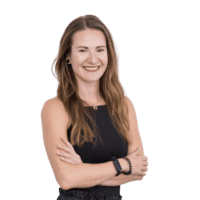Powerlogy
How we reduced Google Ads costs by 35% and increased company turnover by 40%
Year
2021/2022
Segment
Food/Nutritional Supplements
Services
Google Ads, Facebook Ads, Google Analytics, Performance Marketing Management, Export Marketing Consulting
Number of Specialists
5
An established brand in the marketplace is blazing a trail of quality over quantity. The person behind it is Dušan Plichta, who has managed to convince many Slovakians that you can’t compromise on your diet. Powerlogy offers quality food, a focus on sustainability and attention to sourcing of raw materials. In 2021, the company was looking for further growth opportunities. They shook hands with Dexfinity and a partnership was formed, combining lovebrand with performance marketing.
170% increase in shopping revenue
After five months of cooperation, we increased the revenue from shopping campaigns by 170%.
Initial situation
Black Friday was around the corner and Powerlogy needed someone for performance marketing and analytics. They needed to oversee the execution of PPC campaigns on Facebook and Google and ensure a smooth handover of the workload from the agency Performics. They also tried working with a freelancer, but the desired results did not arrive.
They were looking for a partner for a strong internal marketing team, someone who understood the product perfectly and was well-versed in retention marketing, creatives and had a vision for Powerlogy going forward.
The collaboration with Dexfinity was born following turbulent changes and just before the biggest season. As such, our team was facing a real challenge.
Changing agencies and campaign settings in the risky period before Black Friday sales and Christmas was a bold move on Powerlogy’s part. But on the other hand, when does marketing make the most money? In the top season, or during the down-time?
We were not afraid and we went straight to work.
What were we faced with after the data was made available?
The sales strategy was built on the combined strength of the Powerlogy brand and founder Dušan Plichta, a collaboration with influencers and strong retention marketing. Nevertheless, the company appeared to have reached a certain ceiling in online sales.
After thorough preparation, once we had completely analysed the entire Google Ads account and Google Analytics and had gone through an in-depth review with the client to see how things were, what was working, and most importantly, what he had ready for the busy season, we came up with a few suggestions.
We proposed an increase to the share of the performance marketing budget in the purchasing phase. If you are familiar with the SEE-THINK-DO-CARE model, this is the “DO”. We did this at the expense of campaigns that spread awareness (the Awareness or SEE phase). We could afford to take this step thanks to strong “brand” traffic via Google search (organic) and direct visits.
“Our main goal was to dramatically increase ROAS for Google Ads and at the same time increase turnover in absolute numbers. That’s why we optimised campaigns to build initial reach and awareness, focusing not only on final sales, but also utilising assisted conversions (or micro-conversions), such as adding to a basket or signing up for a newsletter, or conversions based on the time a user spends on a particular page,” reveals Vladimíra Giláňová, Project Manager for Google Ads.
The data in Google Analytics was disappearing and incorrectly assigned conversions were complicating the analysis. Existing Google Ads campaigns were already full of errors in their basic setup. At first glance, the Powerlogy product range was running a large variety of different campaigns in comparison to their sales (in our experience, far too large). However, many of these were without any measurable results.
“Splitting a Google Ads account into a multitude of campaigns was once seen as “best practice”. Until algorithms and machine learning entered advertising management, specialists had to granulate, or in other words divide the online store offer into as many small but meaningful units as possible. Sometimes to the level of a single campaign per each product. It was the only way to see what was working and what needed to be turned off.
But those days are long gone, and accounts that have not undergone this transformation are now suffering. Artificial intelligence needs the exact opposite. It requires large campaign units, where it can collect a lot of data about how the path from click to conversion works based on a large number of products. This makes it possible to display ads precisely where they is useful to people,” says Pavol Adamčák, marketing consultant on the project.
We saw huge potential in shopping campaigns (Google Shopping)
If we look at the period of the first season of Powerlogy in Dexfinity from 01/10-31/12/2021,
Google Shopping had a 29.24% share of the total turnover. The comparable period before that, when another agency had it (July 1st, 2021 – Sep 30th, 2021), the share of total turnover was only 21.58%.
Why does it make sense to look at % share of turnover?
Vladka Giláňová, the specialist responsible for Google Ads on this project, explains:
“Percentage share of turnover can filter out the impact of the season. It is irrelevant whether it is summer or Christmas. Although G shopping turnover may vary in absolute terms in the off-season, its percentage should remain stable. That’s assuming no significant changes to campaign settings are made, which can both improve and negatively affect the overall performance.
I also compared the data year-on-year, as these three months are the biggest season for Powerlogy (Black Friday, Christmas, St. Nicholas Day), and the difference here was really extreme. Just for the record, G shopping was introduced to the market back in 2020. And therefore, in my projects, which are well set up, I don’t see a sharp increase in the share of G shopping in the turnover. That is why I attribute it to the campaign setup.
Nor do I know of any other circumstances that would cause G shopping to be completely dysfunctional in 2020. And even if we look at the % share year on year from “01/10/2020 – 31/12/2020″, back then G shopping only had an 8.6% share of turnover.”
Where was the stumbling block?
“Until we came on board, the entire account was running more or less on a “brand” campaign, which was generating “76.65%” of the Google Ads turnover. In the previous reference period, it had generated “65.91%”.
When we were handed the campaigns, we immediately had to literally “blow up” the conversion measurement on the Homepage.
But even with temporarily non-functioning tracking and “redirects” to the Homepage page and other stock pages, we had a 40.74% increase in revenue for this period (Oct 1 – Dec 31, 2021) in “non-brand” campaigns compared to the previous period (Jul 1, 2021 – Sep 30, 2021). Year-on-year growth was +110.49%,” adds Vladka Gilaňová.
The first challenges and their resolution
We were pressed for time. The main season was coming. The work was piling up and we quickly realized that we needed to set up flawlessly functioning internal communications. After a few misunderstandings, we created a separate e-mail channel for communication between Powerlogy’s internal marketing team and Dexfinity’s team of specialists.
Top tip: For faster and direct communication of important matters, we use “groups in G apps”. This way the client can quickly send important info to the entire Dexfinity team.
We prepared two key documents to which both teams had access:
- Planned campaigns (information on all campaigns and their start times)
- Datastudio (clear reporting, statistics, cost-to-turnover ratio, all of which could be viewed by the client themselves and in real time)
Everyone was performing at peak efficiency and the hybrid Dex-Powerlogy marketing team quickly delivered incredible results.
The brand campaign after a week and a half of co-operation
The biggest challenge of the collaboration came right after the first week. We had an extensive brand campaign ahead of us. We had something to build on, the client had the skeleton of the strategy ready, they knew what they wanted to communicate and who their target audience was.
We suggested:
- Expanding target audiences.
- The unification of the structure of campaigns within Facebook advertising, which we no longer sorted by individual platforms. We left it to an intelligent algorithm, which in turn gave us much better results.
- Setting up conversions and optimisation according to campaign type (targeted traffic or email collection).
The aim of the campaign was to gather a large enough audience, which we would then reach through retargeting during Black Friday and the Christmas holidays. In addition, we wanted to strengthen brand awareness, reach out to athletes and people interested in healthy living.
Traffic and new customers as a priority
We divided the brand campaign into:
- campaigns focused on traffic,
- collection of e-mail addresses,
- and remarketing campaigns.
With the help of traffic campaigns, we reached brand new users. The target group consisted of people aged between 25 and 45 years, athletes and people interested in healthy eating.
Those users who visited the site were remarketed in the second part of the campaign using competition vouchers for a purchase worth €100 . New contacts were also gained.
We then used these contacts throughout Black Friday. We narrowed down the audience which we wanted to target and used the wider audience in other remarketing campaigns (collagen quiz, sale campaigns, New Year quiz). We sent out the results of the quizzes along with a discount on their next purchase.
At the same time, we gained new subscribers to the newsletter, which is an important sales channel for Powerlogy. Thanks to strong email marketing, more than 10% of them became customers.
Turnover grew by 40.61% year-on-year
Part of the brand campaign was searching for new audiences. We found them not only among users who watched at least 15 seconds of the brand video, but also on the personal website of the owner himself, Dušan Plichta.
We knew the payoff would not be immediate, and we communicated this honestly to the entire Powerlogy team.
The changes worked. The audiences that we created and then utilised produced results. In November, turnover increased by 40.61% year-on-year. Today, after five months of collaboration, shopping campaign revenues have increased by 170%.
"When your category's click-through rates skyrocket while your PPC ad effectiveness grows by 32% vs. 66%, what can I say other than... good job!"

High turnover was not the final destination. We cleaned up the analytics and tracking of Powerlogy campaigns. Thanks to accurate data, we were able to start bidding on margin.
Google Ads turnover increased by 12% and we reduced costs by 35% year-on-year. We were able to achieve a 43% improvement in CTR (cost to sales ratio).
After successfully cleaning up the analytics, we will deploy the MagicScript algorithm. With it, we will bid on margin in an automated way, increasing Powerlogy’s overall profitability.
The success came as a result of mutual chemistry
We must admit, the Powerlogy brand has turned into an addiction. The company culture was so intense that even we became aligned with it. The owners are consistently thinking in terms of the brand and we added performance settings to the mix.
The internal Powerlogy team came up with great ideas and creatives and they were able to incorporate all of our suggested changes extremely quickly and efficiently. The mutual Dexfinity and Powerlogy partnership has a promising future ahead of it and we are convinced that performance will continue to grow.
The project in numbers
Results
35 %
Cost reduction in Google Ads
We completely overhauled existing campaigns, reducing costs in Google Ads by 35% year-on-year.
40 %
Increased turnover
The streamlining of campaigns also had an impact on the company’s turnover, which we were able to increase by 40.61% year-on-year.
170 %
Increase in shopping revenues
After five months of collaboration, we have increased the revenue from shopping campaigns by 170%.
Source: Google Analytics. Reference period for the first 5 months of cooperation from 01/10/2020 until 28/02/2022
The specialists behind this project

Michal Lichner
Global BizDev, Sales, Marketing Consultant

Pavol Adamčák
International Marketing Strategy Consultant, Founder

Vladimíra Giláňová
PPC Project Manager Google Ads

Andrea Horniczká
Social Media Project Manager META
DIRECT CONTACT DETAILS
Let's join forces.
Share your project with us and let’s discuss it’s potential.

Michal Lichner
Global BizDev, Sales, Marketing Consultant
+421 911 585 689
michal.lichner@dexfinity.com

Eva Cechovska
Sales & Export Consultant
+421 918 341 781
eva.cechovska@dexfinity.com

Pavol Adamcak
International Marketing Strategy Consultant, Founder
+421 918 435 105
pavol.adamcak@dexfinity.com
Select all the areas you are interested in.

